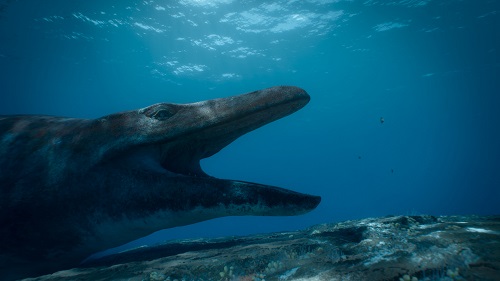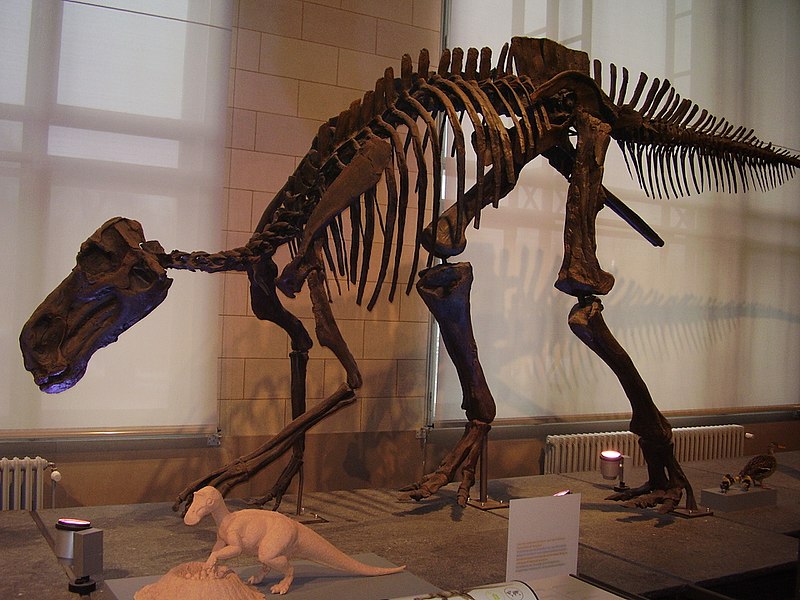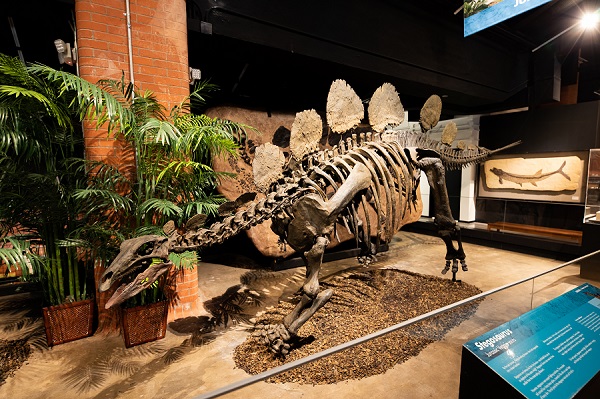Some people like to tell me, “Dr. Bob, get a life!”
I did, 60 years ago. Here I am re-reading my battered copy of the magazine that got me hooked on paleontology.

Happy anniversary to the LIFE magazine that created … me!
Sept. 7, 1953 was the publication date of the greatest, most momentous article on fossils and the history of life. LIFE issued its glorious “The World We Live In” series with a cover story about the prehistoric safari. Stegosaurus and Brontosaurus loomed large on the opening page. There were trilobites too, full-page photos, and scenes from the Texas Red Beds. Then came Triassic dinos, Jurassic dinos, Cretaceous dinos, and the ocean-going reptiles who filled the warm tropical seas of the Mesozoic. There were evolutionary opportunists, the conquering furballs of the Paleocene Epoch, who rushed with Darwinian speed to fill the voids left by dinosaur extinction. Prominent furry mammals included the the famous “Saber-toothed Vegans”, six-horned Uintatheres, followed by Killer Warthogs like our mounted skeleton of Archaeotherium. Finally, the LIFE story reached a crescendo with the Ice Age behemoths: mastodons, mammoths and saber-toothed cats.
But what hooked my fourth-grade mind wasnʼt merely the monster parade of weird and wondrous beasts. It was the story. LIFE writer Lincoln Barnett explained how chromosomes and habitats cooperated in manufacturing new species. How we could see desert lizards evolving right now in Americaʼs Southwest. And how Birds of Paradise exemplified the power of sexual selection to transform bodies and behavior.
The fossil history became even more wonderful because we could understand what shaped the successive waves of creatures who swept across land and sea, dominated the ecosystems, and then suffered catastrophic die-offs to make room for the next surge of evolution. Barnettʼs prose was graceful and riveting (he wrote an award-winning biography of Einstein for kids). Many other budding scientists owe their careers to Barnett and to Life.
We should never underestimate the extraordinary power of fine science journalism. As a 9-year-old, I read and re-read that LIFE magazine in my Granddadʼs solarium. Then I said to myself, “Wow, thatʼs the best story I ever read. Best story I could imagine.” At dinner, I announced to my startled parents, “Iʼm gonna grow up to be a paleontologist and dig up the history of the world!”
After a polite pause, Mom remarked “Thatʼs nice dear … itʼs a phase and youʼll outgrow it.”
(She still says that.)

Hereʼs an unapologetic plug to buy this issue of LIFE. We see here a scene
from the middle of the narrative. A Late Jurassic Allosaurus is feeding on
the rump of a brontosaur. The painting is by Rudy Zallinger and was based
on the skeletons at New York — the museum there dug a brontosaur with
severe tooth marks on the bones, bites that matched the jaws of an
allosaur dug from the same strata not far away.
Do check your used book stores for this issue of LIFE. They are out there, but delicate since the paper is hi-acid. The paleo-issue was bound together with other special LIFE numbers on nature as a hard-cover, “The World We Live In.” There was a kidsʼ edition of the book, too, and a Golden Book version of the fossil story.







